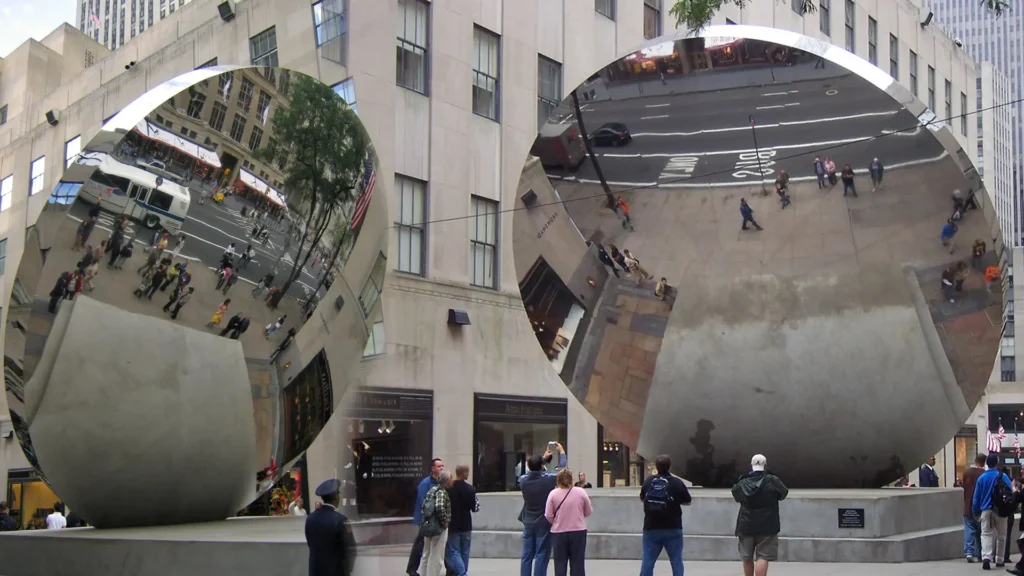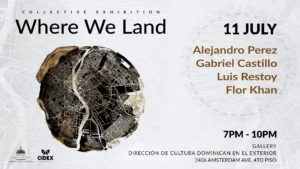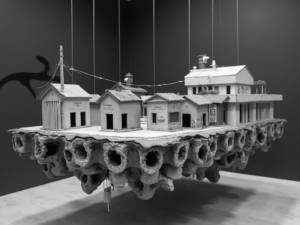With Anish Kapoor, one never knows exactly what to expect, but I am always sure it will be a unique experience. Since I became interested in the world of contemporary art, I have heard his name in magazines and books, not only for his impressive works but also for his innovative approach and his ability to transform space.
I am from the Dominican Republic, whose capital is Santo Domingo. This country is located in the Greater Antilles archipelago and in the eastern part of the island of Hispaniola, which it shares with our brothers in Haiti, occupying just over two-thirds of it. Sometimes I think the entire island is nothing more than a piece of contemporary art. For a long time, the islands were isolated, and contemporary art took time to arrive; however, now, with the internet, news arrives more quickly, though not always live, which makes the experience different.
It’s almost like being able to see “Sky Mirror” by Anish Kapoor, an impressive concave mirror 35 feet in diameter made of polished stainless steel. Standing nearly three stories tall, it was located at the entrance to Fifth Avenue at the Channel Gardens of Rockefeller Center, offering a dazzling experience of light and architecture. It presents viewers with a vivid inversion of the skyline, including the iconic 30 Rockefeller Plaza building.
The immense reflective surface seemed to capture not only the space around me but also the sky, blurring the lines between interior and exterior. I was mesmerized by how, in an instant, I could see the clouds and the movement of the world reflected. It was as if Kapoor invited me to look beyond the obvious and question our perception of reality. That work, which appears so simple in form, is actually a complex reflection on the environment and our relationship with it.
Born in 1954 in Bombay, India, Kapoor has had a fascinating journey. His move to London in the 1970s marked the beginning of a career that would challenge the boundaries of art and sculpture. As I learned more about his life, I realized that his work is deeply influenced by his cultural heritage, as well as his interest in spirituality and nature. In each of his works, I find an echo of his personal quest for truth and the essence of existence.
As I have come to know his work, I have seen “The Bean,” or “Cloud Gate,” that iconic sculpture in Chicago. The organic and polished stainless steel form stretched out before me, reflecting the urban landscape in a surreal manner. I approached and touched the cold surface, feeling the connection between the artwork and the city. With his work, Kapoor not only beautifies the environment but also fosters a conversation between the sculpture and public space, blurring the boundaries between art and life.
Another aspect that struck me was his use of color and material. “Void,” with its deep and dark interior, is one of those works that invites reflection. The absence of light inside creates a sense of mystery and incompleteness. As I peered into that abyss, I felt the work challenged the notion of fullness and urged me to confront my own fears and insecurities. With his mastery, Kapoor transforms the simple idea of emptiness into a powerful emotional experience.
Anish Kapoor’s life is marked by a constant commitment to innovation and experimentation. His work has been recognized and celebrated worldwide, and his influence on contemporary art is undeniable. However, I have also learned that Kapoor is an artist who is not afraid to challenge expectations, confronting criticism and addressing complex themes such as identity, politics, and spirituality.
Upon leaving the exhibition, I felt I had taken a journey through the dimensions of human experience. Kapoor’s works are not only visually striking; they are a testament to art’s ability to explore the complexity of our existence. His ability to evoke emotion and reflection left me with a sense of wonder and gratitude.
Anish Kapoor’s work reminded me that art is a means to question, to seek meaning, and, above all, to connect with ourselves and others. I left with a renewed appreciation for art’s capacity to transform perception, and with the hope that, like Kapoor, we can all find our own voice in the vast landscape of the world.









